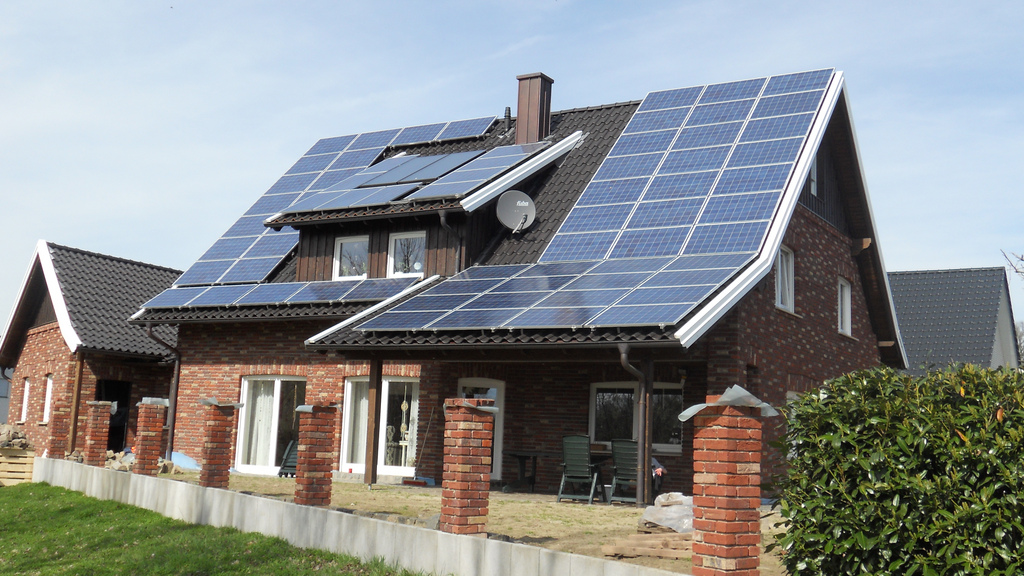Tim FullerSolar panels on a German house.
It’s been a long, dark winter in Germany. In fact, there hasn’t been this little sun since people started tracking such things back in the early 1950s. A few days before Easter, the streets of Berlin were still covered in ice and snow. But spring will come, and when the snow finally melts, it will reveal the glossy black sheen of photovoltaic solar panels glinting from the North Sea to the Bavarian Alps.
Solar panels line Germany’s residential rooftops and top its low-slung barns. They sprout in orderly rows along train tracks and cover hills of coal mine tailings in what used to be East Germany. Old Soviet military bases, too polluted to use for anything else, have been turned into solar installations.
Twenty-two percent of Germany’s power is generated with renewables. Solar provides close to a quarter of that. The southern German state of Bavaria, population 12.5 million, has three photovoltaic panels per resident, which adds up to more installed solar capacity than in the entire United States.
With a long history of coal mining and heavy industry and th... Read more
